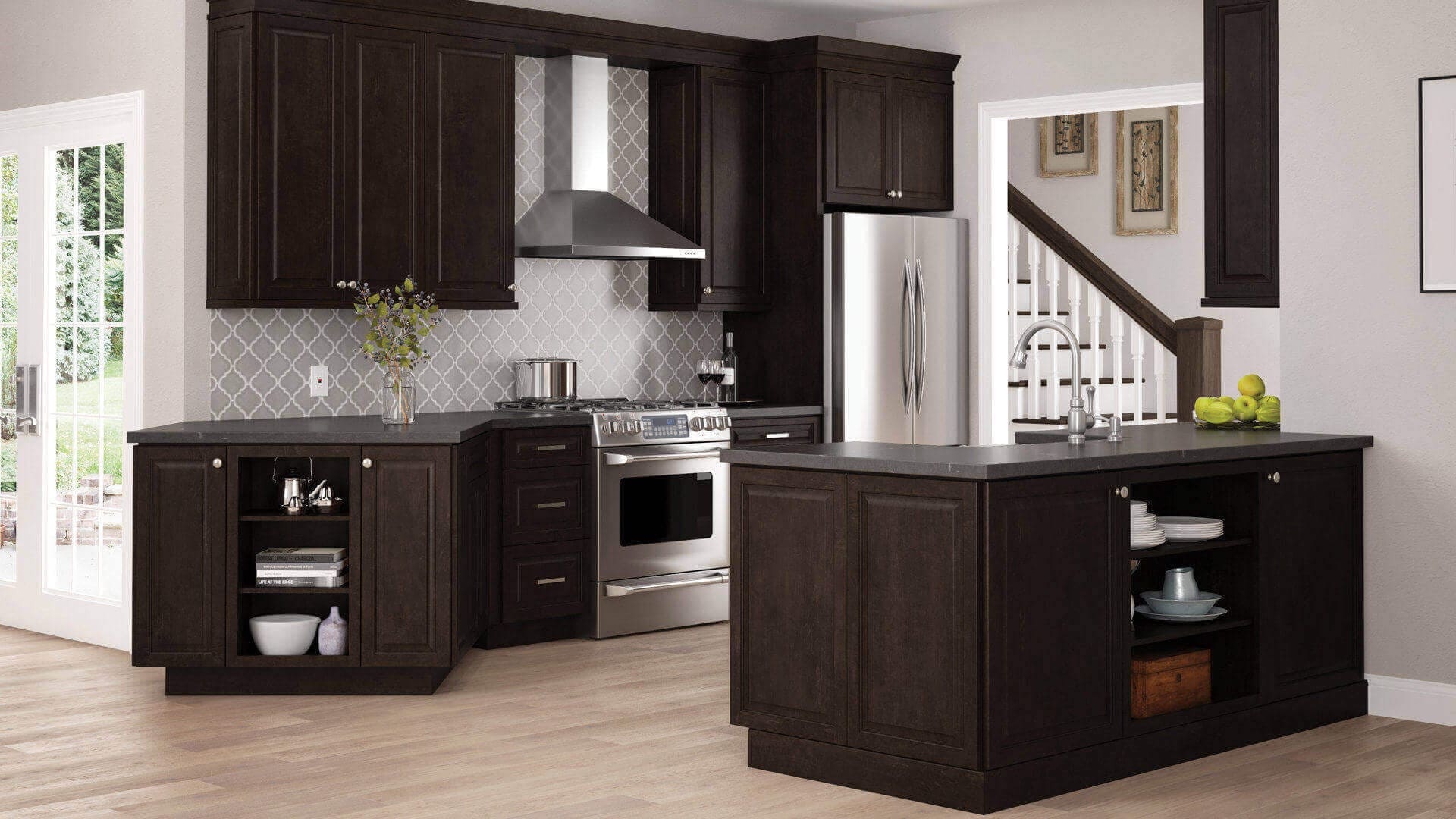Espresso Brown Kitchen Cabinets

Espresso brown kitchen cabinets offer a timeless elegance that can anchor a variety of design styles. Their rich, warm tone provides a sophisticated backdrop, capable of creating both modern and traditional aesthetics depending on the accompanying elements. Understanding how to leverage these cabinets through thoughtful material selection and lighting is key to achieving a truly stunning kitchen.
Espresso Brown Kitchen Cabinet Design Styles
The versatility of espresso brown cabinets allows for integration into diverse kitchen design schemes. Three distinct styles showcase this adaptability effectively.
| Style | Countertop | Backsplash | Lighting |
|---|---|---|---|
| Modern Farmhouse | Butcher block countertop, offering a rustic contrast to the sleek cabinets. | White subway tile backsplash, creating a clean and bright focal point that balances the dark cabinets. | Recessed lighting provides even illumination, while pendant lights over the island add a touch of warmth and visual interest. |
| Transitional | Quartz countertops in a light neutral color, such as white or a very light gray, offering a sophisticated and easy-to-maintain surface. | A textured stone backsplash, like a light-colored marble or travertine, adds visual interest and complements the transitional style. | A combination of under-cabinet lighting and ambient lighting creates a balanced and inviting atmosphere. Task lighting over the stovetop is crucial. |
| Contemporary | Sleek black granite or a dark-colored quartz countertop, enhancing the dramatic effect of the espresso brown cabinets. | A mirrored or metallic backsplash, reflecting light and adding a touch of modern glamour. A dark, textured tile could also create a sophisticated look. | Strategic placement of LED strip lighting under the cabinets provides accent lighting, highlighting the countertops and backsplash while minimizing shadows. |
Lighting Schemes for Espresso Brown Cabinets, Espresso brown kitchen cabinets
Proper lighting is crucial for showcasing the richness of espresso brown cabinets and preventing the kitchen from feeling too dark or claustrophobic. Poor lighting can flatten the color and create an uninviting atmosphere.
Different lighting schemes can dramatically impact the overall feel. For instance, relying solely on overhead lighting can cast harsh shadows, making the cabinets appear dull. Conversely, a well-planned lighting design incorporating ambient, task, and accent lighting creates depth and visual interest. Ambient lighting, such as recessed lights or a chandelier, provides general illumination. Task lighting, such as under-cabinet lights or lights above the stove, illuminates work areas. Accent lighting, such as strategically placed spotlights or LED strips, highlights specific features like the backsplash or countertop. A combination of warm and cool-toned lighting can also be used to balance the darkness of the cabinets and create a welcoming space. For example, warm-toned lighting can be used to create a cozy atmosphere, while cool-toned lighting can be used to brighten up the space. The balance depends on the overall design aesthetic and personal preference.
